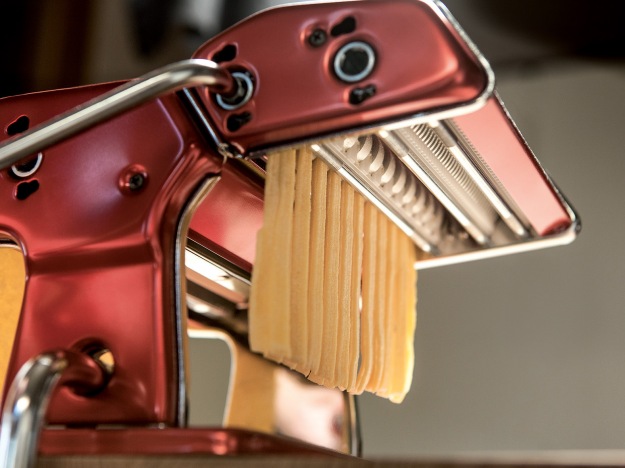
(January, 2016) Building on a tradition that began three generations ago, HIC, Harold Import Co. is proud to announce that as of January 1, 2016, the company will be the exclusive supplier of Marcato products here in the U.S. Marcato S.P.A. is the leading manufacturer in the world of machines and accessories for fresh pasta, biscuits, bread and pizza.
HIC, Harold Import Co. has a three-decade relationship with Marcato, providing the company’s retail customers with pasta machines and accessories from this iconic brand since the 1990’s.
“With this new agreement, we are excited to offer our customers a full range of products from this iconic brand,” explains Robert Laub, president, HIC, Harold Import Co. “Like HIC, Marcato is a family run business, and our long-standing relationship with Marcato has set the groundwork for our new agreement in which HIC, Harold Import Co. will be the exclusive supplier of Marcato products in the U.S. As the the full line source for all Marcato products in the U.S., we are confident that our partnership will prove to be a successful brand-building venture.”

Tacapasta
Marcato’s history began in 1930 when Otello Marcato started producing pasta machines in a small workshop behind his house. His dream was to bring the authentic flavor of life in the kitchen – recipes, floury hands and smiles at the table – into every family.
“We are keenly interested in strengthening our relationships with retailers and consumers, and our confident that our agreement with HIC is a perfect way to continue to build the Marcato brand in the U.S.,” explains Giacomo Marcato, vice president, Marcato, S.p.A. “In addition to offering a full range of products to the U.S. market, we are dedicated to strengthening our relationship with retailers, supporting them with exciting brand-building opportunities including product training, in-store demonstrations, and consumer outreach programs,” Marcato added.
Under the agreement, HIC, Harold Import Co. will offer an extensive collection of high-quality and colorful Marcato products including the world-famous Atlas 150 pasta machine along with its 13 accessories for creating pasta of different thickness, cuts and shapes. Also available is a Ravioli Tablet, the Pasta Drying Rack, Pasta Rake, and Dispenser, in addition to Marcato’s Biscuit Maker – all made in Italy at the family factory.
HIC, Harold Import Co. offers the best culinary supplies, essential cooking tools, gourmet kitchen supplies and food preparation equipment at the most affordable prices. With more than 3,000 culinary supply products from the company’s own brands, exclusive brands, and top brands, HIC products are available in over 10,000 retail outlets worldwide.
Marcato will be holding a demo in the Kitchen Theater on Saturday, January 16th from 1:30-2:30 during the AmericasMart Atlanta. During the International Home + Housewares Show, held in Chicago this March, Chef Fabio Vivani, chef, culinary personality, restaurateur and cookbook author, will be at the HC, Harold Import Co. booth demonstrating Marcato products, signing books and sharing stories about Italy. Stay tuned for more details on this fun event.
For more information, contact HIC, Harold Import Co., at 800-526-2163. For media inquiries, contact Laura Everage, leverage@haroldimport.com, 415-306-4546.



































